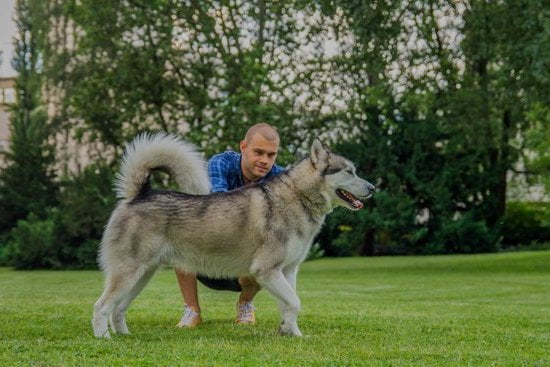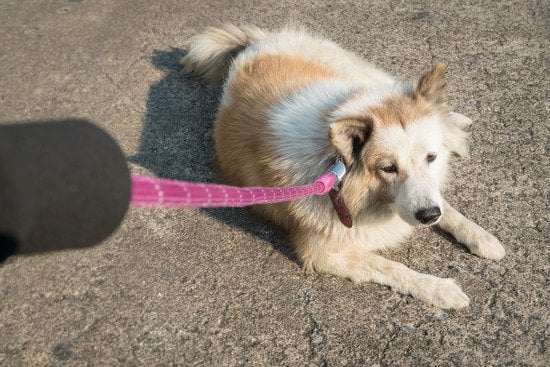Training a dog during the day may seem challenging, but training a dog at night presents its own set of unique obstacles. In this article, we will explore the various challenges associated with nighttime training and provide practical strategies for overcoming them. From creating a safe and comfortable training environment in the dark to effectively communicating with your dog and implementing positive reinforcement techniques, we will cover everything you need to know about how to train a dog at night.
One of the key challenges of training a dog at night is the limited visibility, which can make it difficult for both you and your furry friend to see and understand each other’s actions. Additionally, distractions such as nocturnal wildlife or unfamiliar sounds may pose further difficulties during nighttime training sessions. Understanding these challenges is crucial in order to establish effective strategies for successful nighttime training.
To address these challenges, we will discuss how to create a comfortable and safe training environment in the dark that minimizes distractions and enhances your dog’s focus. Furthermore, we will explore the use of voice, sound cues, visual signals, and positive reinforcement techniques specifically tailored for night-time sessions. By implementing these methods and making necessary adjustments to your dog’s nighttime routine, you can improve the effectiveness of your nighttime training efforts.
Creating a Comfortable and Safe Training Environment in the Dark
Training a dog at night presents its own set of challenges, but creating a comfortable and safe environment is key to successful nighttime training sessions. Here are some tips for setting up the perfect space for training your dog in the dark:
- Ensure proper lighting: While the goal might be to train in the dark, it’s important to have some form of low-level lighting to prevent accidents and to help both you and your dog see each other.
- Remove any obstacles: Clear the training area of any potential hazards that could pose a risk to you or your dog during nighttime sessions.
- Use reflective gear: Invest in reflective collars, leashes, and clothing to make sure both you and your dog are visible if you’re training outdoors.
In addition to these environmental factors, it’s important to create a space where your dog feels relaxed and at ease. This could involve familiarizing them with the area during daylight hours before transitioning to nighttime training. Making sure they have access to water and taking regular breaks can also contribute to an overall sense of comfort during the training session.
When setting up a safe space for nighttime training, remember that consistency is key. Dogs thrive on routine, so establishing a specific area for night-time training can help signal to your pup that it’s time to focus and work. By creating a comfortable environment and sticking to a consistent routine, you can set the stage for successful evening training sessions with your furry friend.
Finally, while providing an ideal space for night-time training is important, always remember safety first. Whether indoors or outdoors, ensure that the area is free from potential dangers that could harm you or your pet. With patience and careful preparation, creating a conducive and secure environment for night-time training can lead to positive results in enhancing your dog’s skills even after sunset.
Choosing the Right Training Methods for Night-Time Sessions
When it comes to training a dog at night, it’s important to choose the right methods that will be effective in low-light conditions. Traditional training techniques may not work as well in the dark, so it’s essential to consider alternative approaches that will help your dog learn and respond during night-time sessions.
Using Scent-Based Training
One effective method for training a dog at night is to incorporate scent-based training. Dogs have an incredibly strong sense of smell, which they rely on heavily in the dark. By using scented objects or treats, you can teach your dog to associate certain scents with specific commands or behaviors. This can be especially useful when working on obedience training or teaching your dog to perform specific tasks during nighttime hours.
Utilizing Tactile Training Techniques
Tactile training involves using touch and physical prompts to guide your dog’s behavior. In low-light conditions, tactile cues can be particularly helpful in communicating with your dog and getting their attention.
For example, using gentle nudges or hand signals can help guide your dog through training exercises and reinforce positive behaviors. This hands-on approach can create a strong bond between you and your dog while also helping them understand what is expected of them during night-time training sessions.
Exploring Sound-Based Training Methods
Sound-based training techniques can also be effective when working with a dog at night. Using clickers, whistles, or other auditory cues can help signal to your dog when they have performed a desired behavior correctly.
These sound-based signals can cut through the darkness and provide clear communication with your dog during training sessions. By pairing these auditory cues with rewards such as treats or praise, you can reinforce positive behaviors and help your dog understand what is expected of them even in low-light conditions.
By incorporating these alternative training methods into your night-time sessions, you can effectively communicate with your canine companion and make the most out of your training efforts even in the dark.
Using Voice and Sound Cues to Communicate With Your Dog in the Dark
When training a dog at night, using voice and sound cues becomes essential for effective communication. In the absence of visible cues, your dog will rely heavily on auditory signals to understand and respond to your commands. Here are some tips on how to use voice and sound cues to communicate with your dog in the dark:
- Speak clearly and confidently: Dogs rely on tone and intonation to interpret commands, so it’s important to speak in a clear and confident voice during night-time training sessions.
- Consistency is key: Use consistent verbal cues for different commands to avoid confusion. For example, use “sit” instead of “sit down” or “be seated.”
- Use clicker training: Clicker training can be an effective method for reinforcing positive behavior during night-time sessions. The distinct sound of the clicker can help your dog associate it with receiving a reward.
In addition to voice cues, you can also utilize specific sounds to communicate with your dog in the dark. For instance, you can train your dog to respond to a whistle or use a specific noise as a signal for certain behaviors. Remember that patience and repetition are crucial when introducing new sound cues during nighttime training.
Using voice and sound cues effectively requires practice and consistency. Over time, your dog will learn to associate certain sounds with specific actions, making night-time training sessions more productive and successful.
Incorporating Visual Cues and Signals for Night-Time Training
Training a dog at night comes with its unique set of challenges, but incorporating visual cues and signals can greatly improve the effectiveness of your training sessions in the dark.
Use of Light-Up Collars or Leashes
One effective way to incorporate visual cues during night-time training is by using light-up collars or leashes. These accessories provide a source of light that helps both you and your dog see each other clearly in the dark. This not only enhances safety during training sessions but also allows you to give visual commands more effectively.
Utilizing Flashlights or Headlamps
In addition to light-up collars and leashes, using flashlights or headlamps can further aid in providing visual cues for your dog at night. By shining a light towards specific objects or areas, you can direct your dog’s attention and guide their behavior accordingly. It’s important to ensure that the light source is not too bright to avoid causing discomfort to your pet’s eyes.
Creating Visual Markers
Another way to enhance night-time training is by creating visual markers in your training area. These markers can be objects of contrasting colors or shapes placed strategically around the space. By teaching your dog to associate specific behaviors with these markers, you can communicate instructions effectively even in low-light conditions.
Incorporating visual cues and signals into your night-time training routine opens up new possibilities for effective communication with your dog in the dark. By utilizing these techniques, you can overcome the challenges of limited visibility and make significant progress in your dog’s training at any time of day.
Implementing Positive Reinforcement Techniques During Night-Time Training
When training a dog at night, positive reinforcement techniques are crucial in promoting good behavior and learning. Positive reinforcement involves rewarding your dog for exhibiting the desired behavior, which encourages them to repeat that behavior in the future. This method is especially effective during night-time training, as it helps your dog associate the dark with positive experiences and reinforces their training progress.
One effective positive reinforcement technique for night-time training is using treats or favorite toys to reward your dog when they respond correctly to commands or exhibit desirable behavior in the dark. By associating obedience and good behavior with rewards, your dog will be more motivated to listen and learn during night-time sessions.
Additionally, verbal praise and affection are powerful forms of positive reinforcement that can be utilized during night-time training. Offering verbal cues such as “good boy” or “well done” in a cheerful and encouraging tone can communicate to your dog that they are on the right track, even in low-light conditions.
Another important aspect of implementing positive reinforcement during night-time training is consistency. It’s essential to deliver rewards or praise immediately after your dog exhibits the desired behavior so that they can make a clear connection between their actions and the positive outcome.
| Positive Reinforcement Technique | Benefits |
|---|---|
| Using treats or favorite toys | Motivates dogs to listen and learn in the dark |
| Verbal praise and affection | Communicates encouragement despite low-light conditions |
| Consistency | Establishes a clear connection between behavior and positive outcome |
Adjusting Your Dog’s Nighttime Routine to Support Training Efforts
Training a dog at night can present a unique set of challenges, but with the right adjustments to your dog’s nighttime routine, you can support and enhance your training efforts. One important aspect of adjusting your dog’s nighttime routine is to ensure that they are well-rested and mentally prepared for training sessions in the dark. This may require making changes to their feeding schedule, evening activities, and sleep environment.
To begin, it is essential to establish a consistent bedtime routine for your dog. This can include activities such as a pre-bedtime walk or playtime, followed by a calming period to help them wind down before sleep. By creating a predictable nightly routine, you can help your dog associate certain activities with rest and relaxation, which can ultimately prepare them for focused training sessions at night.
Additionally, it is crucial to provide your dog with a comfortable and safe sleep environment. This means ensuring that their sleeping area is free from distractions, well-ventilated, and ideally located in a quiet part of your home. By making these adjustments, you can help minimize any potential sources of discomfort or anxiety for your dog, allowing them to rest more soundly and be better prepared for training at night.
Moreover, consider adjusting your dog’s feeding schedule so that they have ample time to digest their food before bedtime. Feeding your dog too close to bedtime can lead to discomfort or restlessness during the night, which may impact their ability to focus during nighttime training sessions. It’s also helpful to take into account their water intake in the evening and adjust it accordingly.
| Activity | Recommendation |
|---|---|
| Bedtime routine | Establish a consistent routine that includes pre-bedtime walk or playtime |
| Sleep environment | Ensure comfort and safety in their sleeping area; locate it in a quiet part of the home |
| Feeding schedule | Adjust feeding time to allow sufficient digestion before bedtime; monitor water intake in the evening |
Troubleshooting Common Issues and Obstacles When Training a Dog at Night
Training a dog at night can present its own set of challenges and obstacles, but with the right approach and techniques, it is definitely possible to achieve success. One key aspect of training a dog at night is creating a comfortable and safe training environment in the dark. This could involve using proper lighting, removing any potential hazards from the training area, and ensuring that both you and your dog feel secure during the training sessions.
In addition, choosing the right training methods for night-time sessions is crucial in ensuring that your dog is able to understand and respond to your commands effectively. Voice and sound cues can be powerful tools for communicating with your dog in the dark, while incorporating visual cues and signals can further reinforce their understanding of what is expected of them during night-time training.
Positive reinforcement techniques are also essential when training a dog at night, as they help to motivate and reward your dog for their good behavior. By implementing these techniques consistently, you can encourage desirable behaviors even during nighttime sessions.
It’s important to remember that adjusting your dog’s nighttime routine to support training efforts can also play a significant role in their overall progress. By making small changes to their routine, such as adjusting feeding times or providing mental stimulation before bedtime, you can create an environment that supports their learning during night-time training sessions.
Overall, troubleshooting common issues and obstacles when training a dog at night requires patience, consistency, and a deep understanding of your dog’s individual needs. By taking the time to address any challenges that may arise during night-time training sessions, you can build a strong foundation for success and ensure that both you and your furry companion enjoy the process of learning together.
Remember that every dog is unique, so it’s important to tailor your approach to suit their specific personality and learning style. With dedication and perseverance, you can effectively train your dog at night while strengthening the bond between you.
Frequently Asked Questions
How Do I Train My Dog to Settle at Night?
Training your dog to settle at night starts with creating a consistent bedtime routine. Keep them active during the day to ensure they’re sufficiently tired at night. Teach them a settle cue and use calming methods before bedtime.
How Do I Train My Dog Not to Wake Up at Night?
To train your dog not to wake up at night, avoid responding to any attention-seeking behavior during the night. Ensure they have had enough exercise and mental stimulation during the day, and create a comfortable sleeping environment for them.
How Do I Get My Dog to Sleep at Night?
Getting your dog to sleep at night involves establishing a regular sleep schedule and creating a calming bedtime routine. Provide them with a comfortable bed in a quiet, dark room, and avoid engaging in stimulating activities right before bedtime.

Welcome to the blog! I am a professional dog trainer and have been working with dogs for many years. In this blog, I will be discussing various topics related to dog training, including tips, tricks, and advice. I hope you find this information helpful and informative. Thanks for reading!





